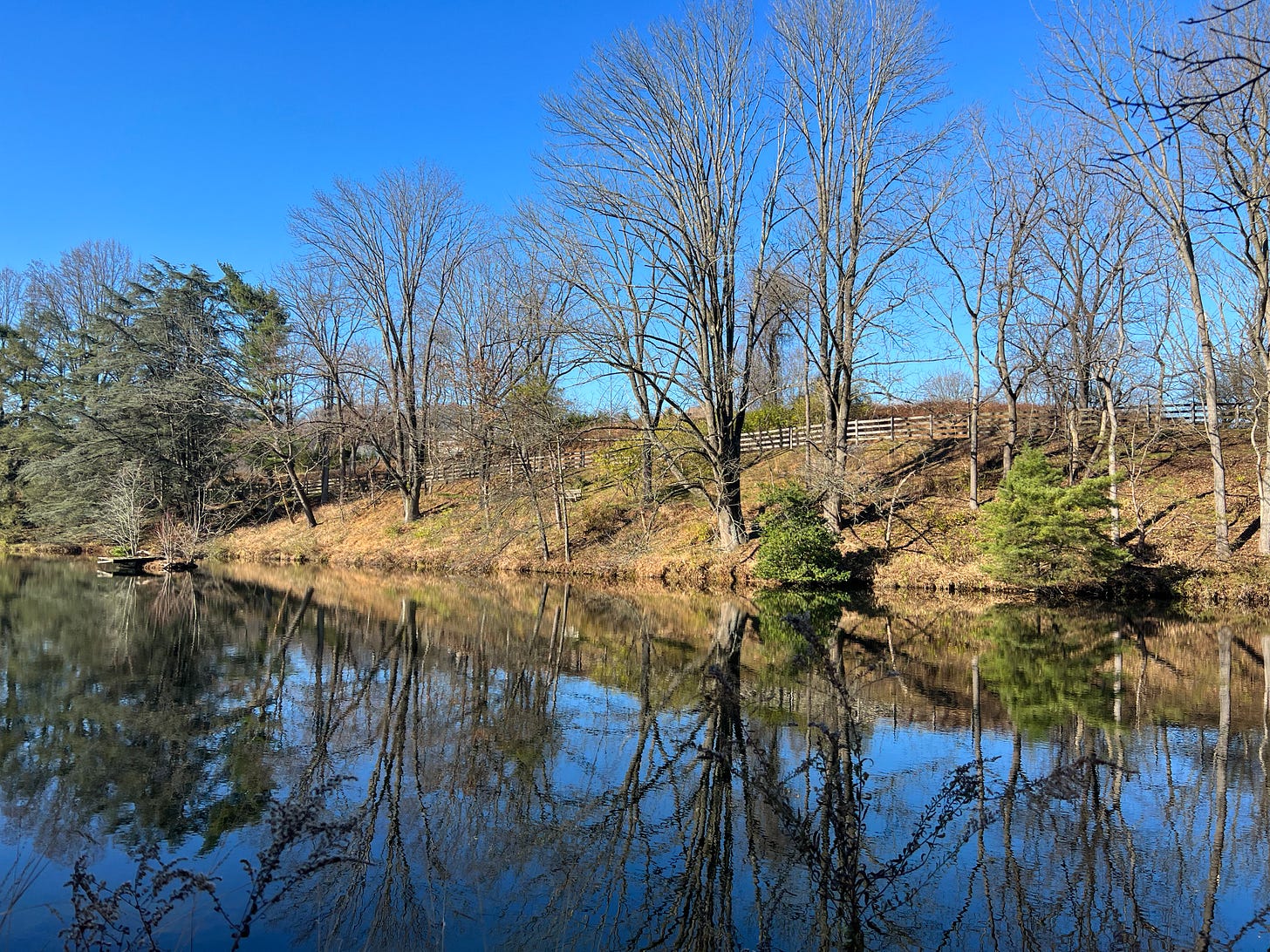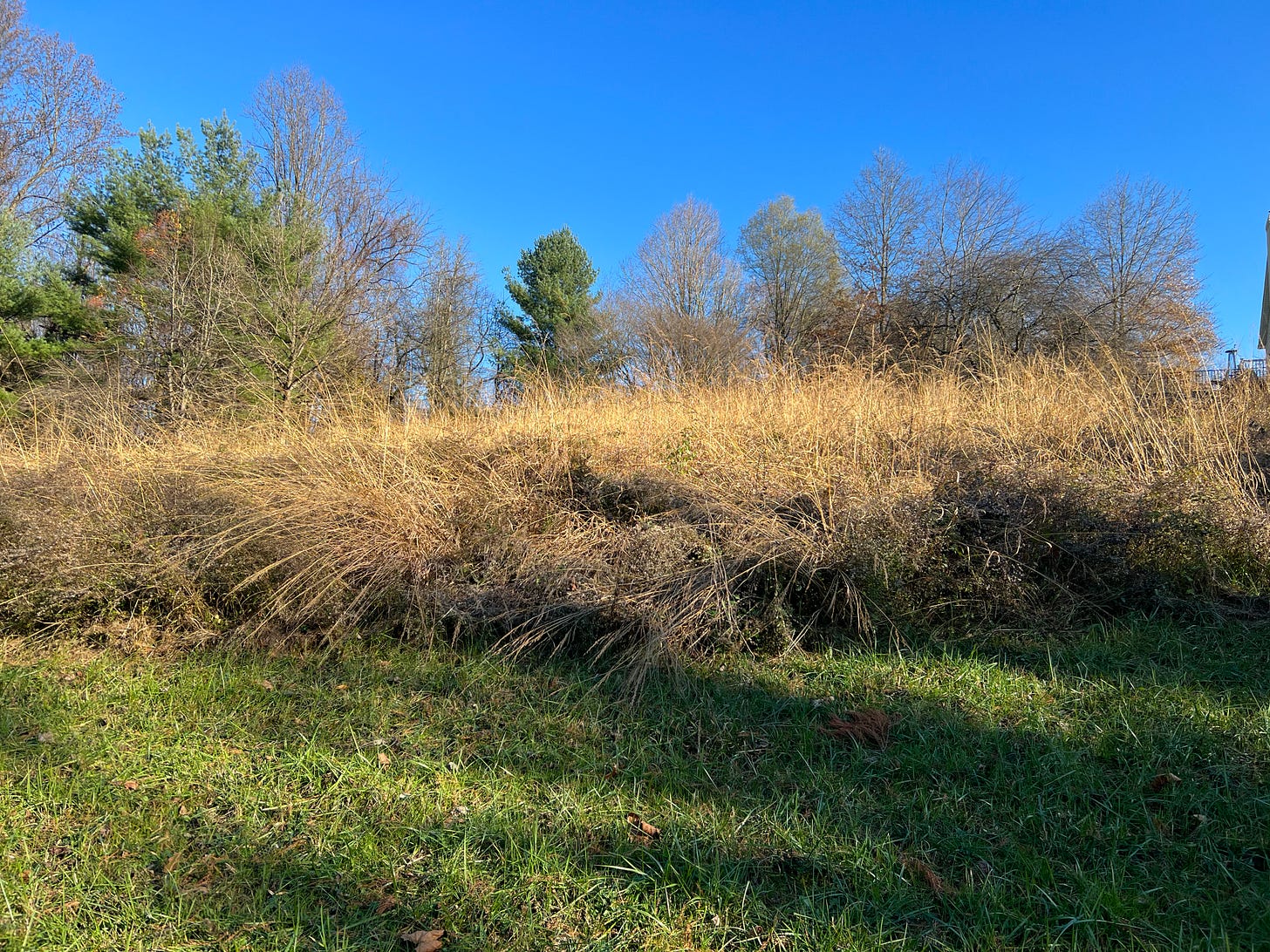I was walking the property line along the east woods outside the deer fence the other day and came upon a skull, which I placed upon a nearby boulder thusly:
I believe it once belonged to a deer, probably a small doe, likely killed by its No. 1 predator, the automobile.
There were no other parts of the skeleton in the vicinity, so I presume a scavenger carried the skull to the spot where I found it, a good two hundred yards from the road, and fellow scavengers scattered the remaining bones in other directions.
The skeleton of our landscape, of course, is not so easily moved, but some aspects of it can be shaped. Fall and winter are a great time to take a look.
Aspects of landscape structure include:
The lay of the land, which a naturalist would consider abiotic.
Other abiotic features such as large boulders and outcroppings.
Water features such as streams or ponds.
Biotic—or living—features planted by us or by nature, which may include hedges, thickets, and trees.
Manmade hardscape that we built or inherited, including paths, driveways, and walls.
Some of these things we have easy control over and others would require dynamite or heavy machinery to change. While we have sculpted a bit of land for gardens and patios near the house at Puddock Hill, mostly we work with what nature gives us.
When I stopped by the low bench at the big pond one recent morning and looked roughly northwest, this is what I saw:
The slope from the pond bank up to the upper pond path has long been one of our biggest challenges. There are a number of old trees there that we work to keep healthy—in particular doing preventive treatment for emerald ash borer—but we have a paucity of young native trees due to decades of deer pressure.
A few years ago, we placed a bench north of the upper pond path. It provides a nice vista down to the water, but of equal importance it creates a welcoming focal point that’s visible from the other side, as well as to cars coming up the driveway.
The slope also has a good many invasive honeysuckle shrubs that I have been reluctant to remove until some of the natives we (and deer-free nature) have planted get better established. Until that happens, the honeysuckles help hold the slope and provide hiding places for birds.
Behind the upper bench we planted seven native Great laurel shrubs (Rhododendron maximum) late last spring. They nearly doubled in size over the summer, and from a different angle you would see some green above the bench, although they don’t look like much from afar. I hope they will form into a thicket and show off with a splash of white flowers in spring, then have another surge of growth, now that they’re established. Their flowers are also a favorite of pollinators such as threatened native bumblebees.
While in summer herbaceous perennials cover the slope, at this time of year I can see that we need both more woody understory and more large trees to return this slope to its natural state. Alas, many years will pass before anything I have planted or will plant grows to be a substantial presence.
Meanwhile, on the other side of the property, I snapped this picture looking northeast:
This is the wet meadow north of the small pond. Dozens of sparrows populate the brush in the left-middle part of the picture, which is one of the reasons we won’t cut it down until March. Another reason is the brush’s ability to slow down flowing water, preventing runoff damage.
You can barely make out the posts of the deer fence (seemingly right below a neighbor’s house, which is actually quite a distance away) if you squint. We planted five Loblolly pines (Pinus taeda) to block that house one day, but from this angle and distance you can scarcely perceive them.
On either side of the deer fence lies what we call the east woods, but with the leaves down its sparseness reveals itself. There are dozens of saplings in there that we hope will fulfill our ambition one day, but we have a long way to go.
Finally, last week I took this picture of the hillside meadow:
We fought invasives in this meadow all summer, and in fact the foreground got mowed down early because it became thick with many more bad guys than good guys. Being a meadow, however, it pays off our efforts on a shorter timeframe than woodlands do. I love the way sunlight makes the grasses glow.
In one of the deciduous trees in the background to the left, you might see a sprig of green. These are leaves of invasive Asian bittersweet. During the clearing work that constituted the first phase of our restoration efforts in this area, we severed bittersweet vines by the dozen, some as thick as a man’s arm, but somehow we missed the vine in question, which has about a two-inch diameter. I cut it with my loppers minutes after taking this picture.
Invasive vines have no place in the healthy garden skeleton.
In the new garden, seed heads of native Muhly grass (Muhlenbergia capillaris) soften the winter landscape:







